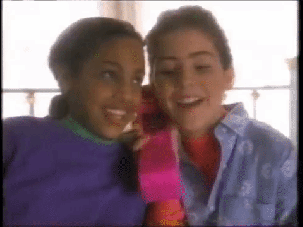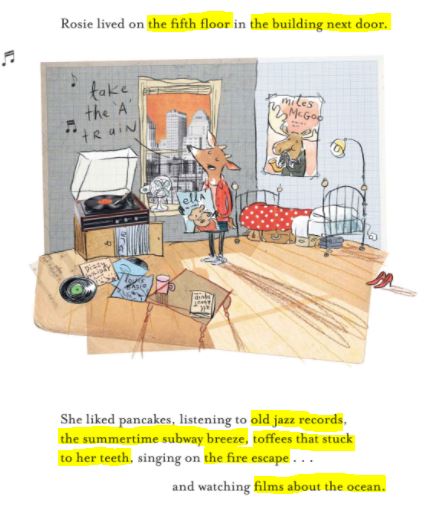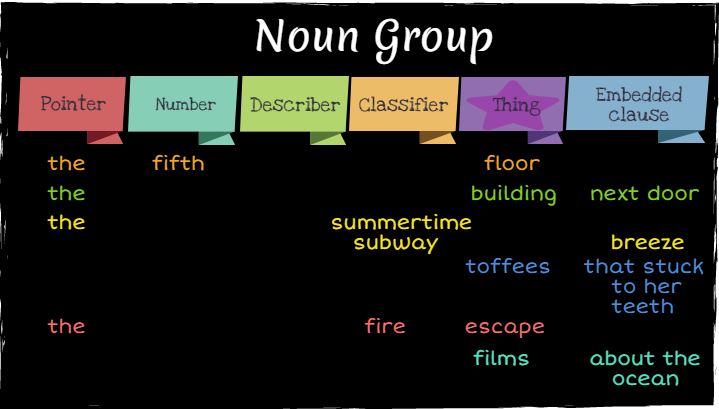I got a message from a friend the other day,
“Libby! How are you? We are having a staff room discussion and need your help! When you are describing a noun why is there a specific order of words? Like why would you say ‘the small blue ball’ rather than ‘the blue small ball?”
Yes. I am the coolest kid on the block. Some people might get messages asking for fashion or dating advice from their friends, I get messages asking for grammar advice. Oh yeah! And you know that I love it!

When I read this message my inner grammar geek jumped up and down “I know this one! I know it!” And we will get to that answer later. But for now I want to ponder. I want to not know. Is their anything wrong or particularly right with either noun group?
- The small blue ball
- The blue small ball
It is like one of those magic eye tricks. the more you look at either phrase the weirder they look. You will have your self questioning your own understanding…or was that just me? Often when friends ask me for dating advice grammar help I question my knowledge. I generally start in a very Aussie way. By having a red hot crack. I have a guess. Then I test it out to see if it works. When it doesn’t work or if I need to rethink it, I “phone a friend”.

So many times I have checked my analysis with colleagues and friends. Perhaps this is why messages like this don’t surprise me because at some point I also probably sent a message asking for help with a clause analysis to this friend. This is another reason why I love functional grammar.
It is a discussion. In traditional grammar a noun is a noun and a verb is verb and there is no discussion or debate around it. Students are given the information from the teacher and must absorb it exactly as it is fed. But functional grammar opens up the flood gates of discourse. It allows language to be analysed in multiple ways. It allows for discussion. It is through this discussion, analysing and explaining analysis that I believe true leaning can occur.

And so onto my answer.
What my friend was asking about was the gem in the clause called the participant. In this case it is a nominal (noun group). She was very correct in saying that there is a particular order in English in which the nominal group is arranged. So that I can just send her a link to this blog next time here it is (jokes).

Nominal groups are focused around a head noun a “Thing”, this is usually a noun but can also be a pronoun or an adjective. The head noun might stand alone in a nominal group or might be surrounded by words to make it specific. It can be premodified (words that come before it) or postmodified (words that come after it). Before the Thing there are 4 optional modifiers they will appear in the above order.
There are of course reasons why their might be more than one pointer, describer or classifier. But there is rare to have more than one number. Different genres will use different pre and post modification. For example, describers are often not needed in information reports.
So what is the point of these colourful boxes? Is it just another piece of grammar knowledge and lingo to make me feel superior? Well…no.
This is in the Australian Curriculum! It is found in:
Year 2:
Understand that nouns represent people, places, concrete objects and abstract concepts; that there are three types of nouns: common, proper and pronouns; and that noun groups/phrases can be expanded using articles and adjectives (ACELA1468)
Year 4:
Understand that the meaning of sentences can be enriched through the use of noun groups/phrases and verb groups/phrases and prepositional phrases (ACELA1493)
and Year 5:
Understand how noun groups/phrases and adjective groups/phrases can be expanded in a variety of ways to provide a fuller description of the person, place, thing or idea (ACELA1508)
Not only that but good writers use noun groups purposefully to enrich their writing. Discovering these in high quality texts with students will give them the best kind of examples of good writing and great noun groups.
Take a look at this single page from Herman and Rosie by Gus Gordon. I have highlighted the noun groups.
Take a look at how many there are!
On one single page!

Next using what we now know about noun groups you could analyse this text to see the variety of modifiers that good writers use to develop their noun groups.

This can then be used to develop students writing.
Goals can be set, nouns can be modified and writing improved!
I love that I get messages about grammar. I love that it is something that can be discussed, wondered about and inquired into. If that makes me an nerd burger then slap those thick-rimmed glasses on my eyes and call me a nerd!

So next time you have a question on grammar don’t feel that you have to have the exact right answer straight away. Explore the options, discuss the possibilities and do this with your students. Let them see you as a learner, let them see the processes you go through. because if we want our students to learn we sometimes need to show them learning in action.

Love your work Libby Baker :)!
LikeLike
Thanks Glenda 🙂
LikeLike